This article was co-authored by Jurdy Dugdale, RN. Jurdy Dugdale is a Registered Nurse in Florida. She received her Nursing License from the Florida Board of Nursing in 1989.
There are 16 references cited in this article, which can be found at the bottom of the page.
This article has been viewed 72,477 times.
Thrush is a yeast infection that can develop in the mouth or the vagina. It is caused by an overgrowth of a naturally occurring fungus, Candida.[1] In order to prevent this type of infection in both adults and children, focus on personal cleanliness and preventative actions. By keeping the places where this infection can occur clean, dry, and airy, as well as by minimizing your risk factors, you can reduce the chance of getting a thrush infection.
Steps
Preventing Oral Thrush in Adults
-
1Brush and floss your teeth. To keep your teeth healthy and resistant to infection, you should brush your teeth twice a day and floss once a day. Brushing when you get up in the morning and before you go to bed at night will keep your mouth healthy and infection free.[2]
- Brushing and flossing reduces the risk of various infections in the mouth, including gingivitis. If your immune system is trying to fight off other infections, it is less likely to be able to fight off a thrush infection.
-
2Keep your dentures clean. Cleaning them daily can remove food debris that can promote the fungus to grow. You should also remove and soak your dentures nightly to reduce the risk of fungal growth.[3]
- Try removing your dentures at least a couple evenings every week when you are home and don't need to use them, in addition to taking them out while you sleep. This will help keep your mouth and dentures cleaner, which can minimize the chance of getting thrush.
Advertisement -
3Replace your toothbrush every 3 to 4 months. To keep your mouth clean, and to keep fungus at a minimum, you should replace your toothbrush regularly. Dentists generally advise that you should get a new toothbrush every 3 to 4 months. This minimizes the chance of the thrush fungus growing in your toothbrush and infecting your mouth.[4]
- A toothbrush that needs to be replaced will have worn and misshaped bristles.
- Fungus does not live outside of the body for very long, but taking preventative measures is better than risking infection.
-
4Have regular dental cleanings. Getting dental cleanings several times a year can decrease your chance of getting a thrush infection. Most dental insurance will cover 1 to 2 cleanings per year, so check with your insurance company to verify how many you can have. If you don't have dental insurance, look for a dental school or a free dental clinic in your area to get your cleanings.[5]
- Regular dental cleanings help to minimize infections in general and will clean off all food debris that you can't remove when brushing and flossing. Your dentist will also be able to spot any signs that a thrush infection is starting in your mouth when they are giving you a cleaning.
- Getting cleanings is especially important if you wear dentures or have diabetes, as these are 2 risk factors for getting thrush.
- If you are planning to go to a dental school or clinic for a free cleaning, call ahead to book an appointment, as there may be a long waiting time.
-
5Rinse your mouth after using a corticosteroid inhaler. Using an inhaler for asthma can increase your chance of getting thrush. To minimize this risk, rinse your mouth out with water after using it. Rinsing your mouth out will remove any excess medicine from your mouth.[6]
-
6Treat illnesses that can cause thrush. There are some diseases that, if left untreated, can increase your likelihood of getting oral thrush. For example, uncontrolled diabetes, in particular, can increase your risk of thrush. Additionally, conditions that suppress your immune system, such as AIDS or cancer, can also increase your risk of thrush because your body won't fight off the infection.[7]
- Uncontrolled diabetes can increase the amount of sugar in your saliva, which increases the ability of the thrush fungus to grow. If you manage your diabetes with insulin and a controlled diet, your sugar levels and your risk of thrush will be minimized.
- Immunosuppression can decrease saliva and kill friendly bacteria in the mouth and especially the vaginal areas.
- Chronic dry mouth can also promote thrush, as a lack of saliva can allow the thrush fungus to grow. Get your dry mouth treated in order to minimize your risk of thrush.
- Alcoholism, which is a disease, can also increase your risk. Talk to your doctor about your alcohol consumption and any changes they'd recommend.
-
7Be aware of treatments that increase your risk of developing thrush. Talk to your doctor about your risk of getting thrush and about ways you can minimize that risk while getting medical treatment. They may be able to adjust your medication or offer additional medications that can minimize the chance of a fungal infection.[8]
- For instance, treatments for HIV and AIDS can suppress the immune system, which makes a thrush infection more likely.
- Also, having cancer treatments, such as chemotherapy or radiation can promote the development of thrush.
Avoiding Oral Thrush in Infants
-
1Clean and sterilize your infant's bottles and pacifiers. In order to prevent oral thrush in infants, you should wash and sterilize pacifiers and all bottle parts in hot, soapy water or in a dishwasher. This should be done after every use.[9]
- Oral thrush can grow on all baby bottle parts, so be sure to wash and sterilize nipples, bottles, and any other parts. Since the nipple provides a warm, moist environment that is hard to clean, it requires extra attention. You can boil them or replace them with new nipples often. If your baby is prone to yeast infections and is bottle fed, consider increasing cleaning and sterilizing of the bottles.
- It's also a good idea to wash and sterilize toys that your baby likes to chew on, such as teething toys.
-
2Breastfeed your infant, if possible. Breastfeeding is less likely to cause thrush than bottle feeding. This is because there is less risk of the fungus growing on a nipple than in a bottle. Bottles can easily pass the fungus to your baby if they are not properly cleaned.
- If breastfeeding is not possible, it does not mean that your baby will get oral thrush. It just means that you need to be diligent about cleaning your child's bottles.
-
3Store milk properly. Yeast can develop in breast milk or formula that is not stored properly. To prevent this, be sure to keep bottles in a refrigerator when they're not being actively used.[10]
- Breast milk can be kept at room temperature for 6 to 8 hours if you are going to use it during that time. If not, store your breast milk in a refrigerator or freezer. Typically breast milk can be kept in a fridge for up to 5 days and a freezer for up to 6 months.[11]
- It is possible to store a pre-made bottle of formula in the fridge for as long as the manufacturer suggests. However, when feeding a baby formula it is best to make up the bottles as needed.
-
4Treat infections on your nipples. If your nipples have become red and irritated, they may be infected with thrush, though it could also be a case of simple mastitis. See your doctor to get this treated so that you don't pass it on to your infant while breastfeeding.[12]
- Some symptoms that you may experience if you have thrush on your nipples include itching, burning, flaking, and cracking skin on the nipple. You may also get redness, tiny blisters, shooting pains during and after breast feeding, and deep breast pain that will not go away.
- Treatment typically consists of an antifungal ointment that is applied to the nipples.
-
5Treat vaginal thrush if you are pregnant. If you have vaginal thrush while giving birth, it can be passed on to your infant. Treat the fungal infection before giving birth and you will reduce the risk of your baby contracting it.[13]
- Pay attention for signs you could have vaginal thrush. Symptoms include abnormal vaginal discharge that is white and cottage cheese-like, swelling in the genital area, burning or itching in the genital area, and pain or discomfort during urination or sex.[14]
- Discharge from vaginal thrush should not smell, so talk to your doctor about other potential causes if your discharge smells.
- Vaginal thrush is typically treated with prescription or over-the-counter antifungal medications. However, if you are pregnant you should discuss the condition and treatment with your doctor before beginning treatment.
Minimizing the Risk of Vaginal Thrush
-
1Keep your vaginal area clean. The best way to prevent getting vaginal thrush, also known as a yeast infection, is to clean your vaginal area on a regular basis. Washing it once a day while showering or bathing can keep it clean but not dried out or irritated.[15]
-
2Avoid using potential irritants. Using irritating products in your vaginal area can cause the skin to get inflamed and more prone to infection. For example, products that have a lot of perfumes, such as heavily-scented moisturizers or cleaners, can irritate the vaginal area.[16]
- Avoid using heavily-scented soaps, shower gels, douches, or deodorants in your vaginal area.
- You should also avoid using latex products in your vaginal area if you have a sensitivity to them.
-
3Wear underwear that is made of breathable, natural fabrics. To keep your vaginal area healthy, it's a good idea to wear underwear made of breathable material and to make sure that the underwear is not too tight. This allows for air circulation that can help to minimize fungal development.[17]
- Underwear made of cotton or silk are good choices.[18]
- There is special underwear made for people with eczema that can work well for preventing thrush. These can be purchased from online retailers.
- You can also go without underwear while you're at home, though you should use a towel or blanket to cover the area where you sit.
-
4Talk to your doctor about whether to eat probiotics and yogurt. Many people use probiotic supplements and the live cultures in yogurt as a preventative treatment for yeast infections. Since medical researchers are still looking into the effectiveness of these supplements, talk to your doctor about whether they’re right for you.[19]
- Always talk to your doctor about probiotics and yogurt while taking antibiotics.
- L. acidophilus is the probiotic supplement that is most commonly used to prevent vaginal thrush. It is typically available at health food stores and from online retailers.
- If you are eating yogurt to minimize your risk of a thrush infection, be sure that it is labeled as having "live cultures." This will ensure that is has the good bacteria that you want.
-
5Be cautious if you have risk factors for getting vaginal thrush. There are some risk factors that can increase your likeliness of getting thrush. If you have 1 or more of the risk factors you should be especially careful about keeping your vaginal area clean and cared for. The risk factors include:[20]
- A previous yeast infection.
- Your menstrual cycle.
- Pregnancy.
- A compromised immune system.
- Uncontrolled diabetes.
- Taking antibiotics.
- Intercourse without proper lubrication.
References
- ↑ https://www.betterhealth.vic.gov.au/health/conditionsandtreatments/vaginal-thrush
- ↑ https://my.clevelandclinic.org/health/diseases/10956-thrush
- ↑ https://www.nhsinform.scot/illnesses-and-conditions/infections-and-poisoning/oral-thrush-in-adults
- ↑ https://www.ada.org/resources/research/science-and-research-institute/oral-health-topics/toothbrushes
- ↑ https://health.clevelandclinic.org/thrush-the-white-stuff-growing-in-your-mouth-and-how-to-get-rid-of-it/
- ↑ https://www.nhs.uk/conditions/steroid-inhalers/
- ↑ https://my.clevelandclinic.org/health/diseases/10956-thrush
- ↑ https://www.cdc.gov/fungal/diseases/candidiasis/thrush/index.html
- ↑ https://www.nhs.uk/conditions/oral-thrush-mouth-thrush/
- ↑ https://kidshealth.org/en/parents/thrush.html
- ↑ https://www.cdc.gov/breastfeeding/recommendations/handling_breastmilk.htm
- ↑ http://kidshealth.org/en/parents/thrush.html#
- ↑ https://www.nhs.uk/pregnancy/related-conditions/common-symptoms/thrush/
- ↑ https://www.nhs.uk/Conditions/Thrush/Pages/Introduction.aspx#symptoms
- ↑ https://www.betterhealth.vic.gov.au/health/conditionsandtreatments/vaginal-thrush
- ↑ https://www.nhs.uk/Conditions/Thrush/Pages/Introduction.aspx#prevention
- ↑ https://www.cdc.gov/fungal/diseases/candidiasis/genital/index.html
- ↑ https://www.nhs.uk/Conditions/Thrush/Pages/Introduction.aspx#prevention
- ↑ https://health.clevelandclinic.org/do-home-remedies-actually-work-for-yeast-infections/
- ↑ https://www.cdc.gov/fungal/diseases/candidiasis/genital/index.html
About This Article
To prevent oral thrush in adults, brush your teeth twice per day and floss at least once per day to keep this naturally occurring fungus to a minimum. You should also replace your toothbrush every 3-4 months, get regular dental cleanings, and rinse out your mouth after using a corticosteroid inhaler. To prevent vaginal thrush, wear underwear made of breathable fabric and avoid using irritants like heavily-scented soaps, douches, and deodorants near your vaginal area. For tips on preventing oral thrush in infants, read on!

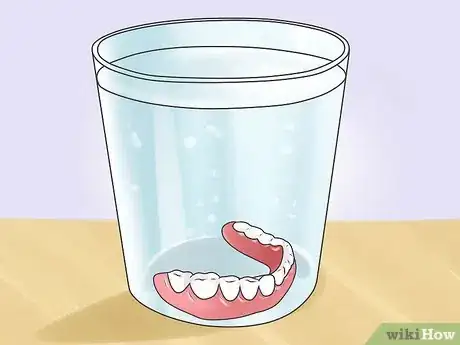
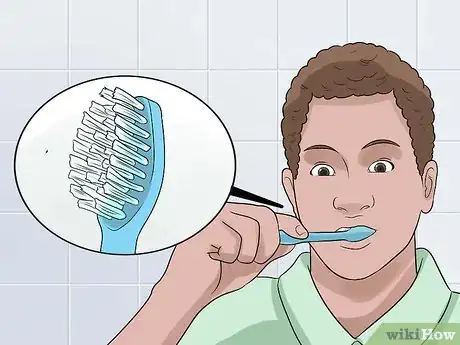
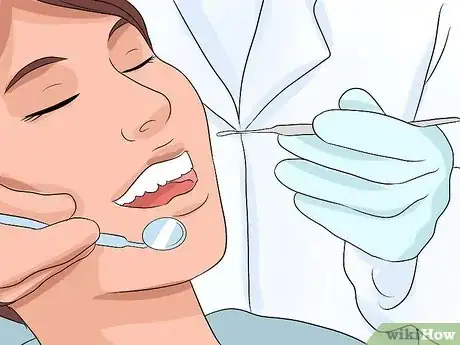



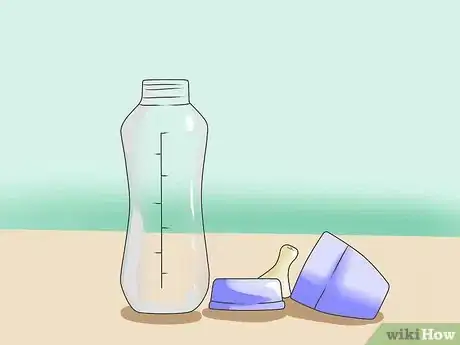




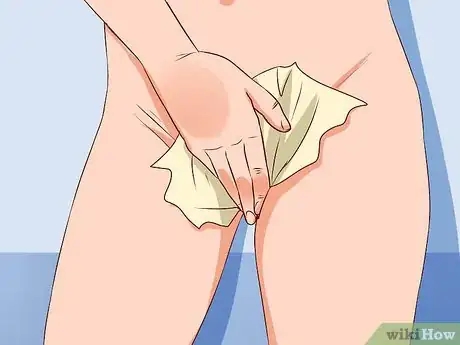
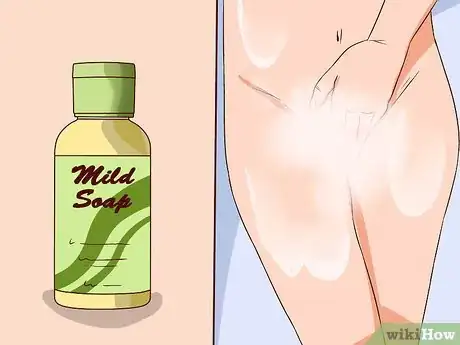















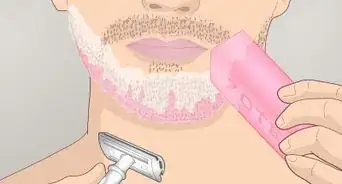














































Medical Disclaimer
The content of this article is not intended to be a substitute for professional medical advice, examination, diagnosis, or treatment. You should always contact your doctor or other qualified healthcare professional before starting, changing, or stopping any kind of health treatment.
Read More...